Nutritional interventions for treating foot ulcers in people with diabetes
- PMID: 32677037
- PMCID: PMC7388930
- DOI: 10.1002/14651858.CD011378.pub2
Nutritional interventions for treating foot ulcers in people with diabetes
Abstract
Background: Foot ulcers in people with diabetes are non-healing, or poorly healing, partial, or full-thickness wounds below the ankle. These ulcers are common, expensive to manage and cause significant morbidity and mortality. The presence of a wound has an impact on nutritional status because of the metabolic cost of repairing tissue damage, in addition to the nutrient losses via wound fluid. Nutritional interventions may improve wound healing of foot ulcers in people with diabetes.
Objectives: To evaluate the effects of nutritional interventions on the healing of foot ulcers in people with diabetes.
Search methods: In March 2020 we searched the Cochrane Wounds Specialised Register; the Cochrane Central Register of Controlled Trials (CENTRAL); Ovid MEDLINE; Ovid Embase and EBSCO CINAHL Plus. We also searched clinical trials registries for ongoing and unpublished studies, and scanned reference lists of relevant included studies as well as reviews, meta-analyses and health technology reports to identify additional studies. There were no restrictions with respect to language, date of publication or study setting.
Selection criteria: We included randomised controlled trials (RCTs) that evaluated the effect of nutritional interventions on the healing of foot ulcers in people with diabetes.
Data collection and analysis: Two review authors, working independently, assessed included RCTs for their risk of bias and rated the certainty of evidence using GRADE methodology, using pre-determined inclusion and quality criteria.
Main results: We identified nine RCTs (629 participants). Studies explored oral nutritional interventions as follows: a protein (20 g protein per 200 mL bottle), 1 kcal/mL ready-to-drink, nutritional supplement with added vitamins, minerals and trace elements; arginine, glutamine and β-hydroxy-β-methylbutyrate supplement; 220 mg zinc sulphate supplements; 250 mg magnesium oxide supplements; 1000 mg/day omega-3 fatty acid from flaxseed oil; 150,000 IU of vitamin D, versus 300,000 IU of vitamin D; 250 mg magnesium oxide plus 400 IU vitamin E and 50,000 IU vitamin D supplements. The comparator in eight studies was placebo, and in one study a different dose of vitamin D. Eight studies reported the primary outcome measure of ulcer healing; only two studies reported a measure of complete healing. Six further studies reported measures of change in ulcer dimension, these studies reported only individual parameters of ulcer dimensions (i.e. length, width and depth) and not change in ulcer volume. All of the evidence identified was very low certainty. We downgraded it for risks of bias, indirectness and imprecision. It is uncertain whether oral nutritional supplement with 20 g protein per 200 mL bottle, 1 kcal/mL, nutritional supplement with added vitamins, minerals and trace elements, increases the proportion of ulcers healed at six months more than placebo (risk ratio (RR) 0.80, 95% confidence interval (CI) 0.42 to 1.53). It is also uncertain whether arginine, glutamine and β-hydroxy-β-methylbutyrate supplement increases the proportion of ulcers healed at 16 weeks compared with placebo (RR 1.09, 95% CI 0.85 to 1.40). It is uncertain whether the following interventions change parameters of ulcer dimensions over time when compared with placebo; 220 mg zinc sulphate supplement containing 50 mg elemental zinc, 250 mg magnesium oxide supplement, 1000 mg/day omega-3 fatty acid from flaxseed oil supplement, magnesium and vitamin E co-supplementation and vitamin D supplementation. It is also uncertain whether 150,000 IU of vitamin D, impacts ulcer dimensions when compared with 300,000 IU of vitamin D. Two studies explored some of the secondary outcomes of interest for this review. It is uncertain whether oral nutritional supplement with 20 g protein per 200 mL bottle, 1 kcal/mL, nutritional supplement with added vitamins, minerals and trace elements, reduces the number of deaths (RR 0.96, 95% CI 0.06 to 14.60) or amputations (RR 4.82, 95% CI 0.24 to 95.88) more than placebo. It is uncertain whether arginine, glutamine and β-hydroxy-β-methylbutyrate supplement increases health-related quality of life at 16 weeks more than placebo (MD -0.03, 95% CI -0.09 to 0.03). It is also uncertain whether arginine, glutamine and β-hydroxy-β-methylbutyrate supplement reduces the numbers of new ulcers (RR 1.04, 95% CI 0.71 to 1.51), or amputations (RR 0.66, 95% CI 0.16 to 2.69) more than placebo. None of the included studies reported the secondary outcomes cost of intervention, acceptability of the intervention (or satisfaction) with respect to patient comfort, length of patient hospital stay, surgical interventions, or osteomyelitis incidence. One study exploring the impact of arginine, glutamine and β-hydroxy-β-methylbutyrate supplement versus placebo did not report on any relevant outcomes.
Authors' conclusions: Evidence for the impact of nutritional interventions on the healing of foot ulcers in people with diabetes compared with no nutritional supplementation, or compared with a different dose of nutritional supplementation, remains uncertain, with eight studies showing no clear benefit or harm. It is also uncertain whether there is a difference in rates of adverse events, amputation rate, development of new foot ulcers, or quality of life, between nutritional interventions and placebo. More research is needed to clarify the impact of nutritional interventions on the healing of foot ulcers in people with diabetes.
Copyright © 2020 The Cochrane Collaboration. Published by John Wiley & Sons, Ltd.
Conflict of interest statement
Zena Moore: received an honorarium for speaking at professional meetings for Smith & Nephew, and Molnlycke. Neither of these companies manufacture or market the intervention of interest, or a potential comparator relevant to the topic of this review.
Meave Corcoran: received a Cochrane Fellowship grant from the Health Research Board of Ireland to undertake this review.
Declan Patton: none known.
Figures
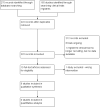
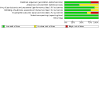
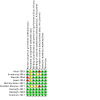
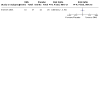
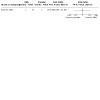
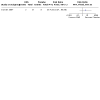
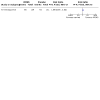
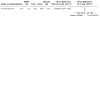
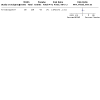
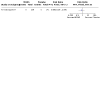
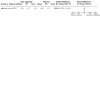


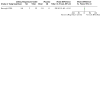
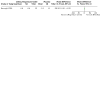
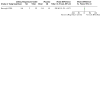
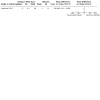

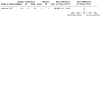
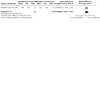
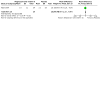
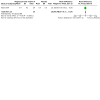

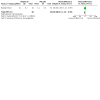
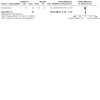
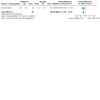
Update of
- doi: 10.1002/14651858.CD011378
References
References to studies included in this review
Afzali 2019 {published data only}
-
- Afzali H, Jafari Kashi AH, Momen-Heravi M, Razzaghi R, Amirani E, Bahmani F, et al. The effects of magnesium and vitamin E co-supplementation on wound healing and metabolic status in patients with diabetic foot ulcer: a randomized, double-blind, placebo-controlled trial. Wound Repair and Regeneration 2019;27(3):277-84. - PubMed
Armstrong 2014 {published data only}
-
- Armstrong DG, Hanft JR, Driver VR, Smith AP, Lazaro-Martinez JL, Reyzelman AM, et al, Diabetic Foot Nutrition Study Group. Effect of oral nutritional supplementation on wound healing in diabetic foot ulcers: a prospective randomized controlled trial. Diabetic Medicine 2014;31(9):1069-77. - PMC - PubMed
Eneroth 2004 {published data only}
-
- Eneroth M, Larsson J, Oscarsson DC, Apelqvist J. Nutritional supplementation for diabetic foot ulcers: the first RCT. Journal of Wound Care 2004;13(6):230-4. - PubMed
Jones 2014 {published data only}
Momen‐Heravi 2017 {published data only}
-
- Momen-Heravi M, Barahimi E, Razzaghi R, Bahmani F, Gilasi HR, Asemi Z. The effects of zinc supplementation on wound healing and metabolic status in patients with diabetic foot ulcer: a randomized, double-blind, placebo-controlled trial. Wound Repair and Regeneration 2017;25:512-20. - PubMed
Mozaffari‐Khosravi 2017 {published data only}
-
- Mozaffari-Khosravi H, Haratian-Arab M, MoeinTavakkoli H, Nadjarzadeh A. Comparative effect of two different doses of vitamin D on diabetic foot ulcer and inflammatory indices among the type 2 diabetic patients: a randomized clinical trial. Iranian Journal of Diabetes and Obesity 2017;8(4):164-71.
Razzaghi 2017 {published data only}
-
- Razzaghi R, Pourbagheri H, Momen-Heravi M, Bahmani F, Shadi J, Soleimani Z, et al. The effects of vitamin D supplementation on wound healing and metabolic status in patients with diabetic foot ulcer: a randomized, double-blind, placebo-controlled trial. Journal of Diabetes and its Complications 2017;31(4):766-72. - PubMed
Razzaghi 2018 {published data only}
-
- Razzaghi R, Pidar F, Momen-Heravi M, Bahmani F, Akbari H, Asemi Z. Magnesium supplementation and the effects on wound healing and metabolic status in patients with diabetic foot ulcer: a randomized, double-blind, placebo-controlled trial. Biological Trace Element Research 2018;181:207-15. - PubMed
Soleimani 2017 {published data only}
-
- Soleimani Z, Hashemdokht F, Bahmani F, Taghizadeh M, Memarzadeh MR, Asemi Z. Clinical and metabolic response to flaxseed oil omega-3 fatty acids supplementation in patients with diabetic foot ulcer: a randomized, double-blind, placebo-controlled trial. Journal of Diabetes and its Complications 2017;31:1394-400. - PubMed
References to studies excluded from this review
Mohseni 2018 {published data only}
-
- Mohseni S, Bayani M, Bahmani F, Tajabadi-Ebrahimi M, Bayani MA, Jafari P, et al. The beneficial effects of probiotic administration on wound healing and metabolic status in patients with diabetic foot ulcer: a randomized, double-blind, placebo-controlled trial. Diabetes/Metabolism Research and Reviews 2018;34(3):e2970. - PubMed
References to studies awaiting assessment
NCT00711217 {published data only}
-
- NCT00711217. Evaluation of a medical food for chronic wounds. clinicaltrials.gov/ct2/show/NCT00711217 (first received 8 July 2008).
References to ongoing studies
ACTRN12612000036819 {published data only}
-
- ACTRN12612000036819. The effect of nutritional supplementation on the healing of diabetic foot ulcers. org.au/Trial/Registration/TrialReview.aspx?id=347920 (first received 9th January 2012).
IRCT20100102002954N12 {published data only}
-
- IRCT20100102002954N12. Evaluation of the efficacy of vitamin D in the treatment of diabetic foot ulcers. apps.who.int/trialsearch/Trial2.aspx?TrialID=IRCT20100102002954N12 (first received 22 September 2018).
IRCT2015041321740N1 {published data only}
-
- IRCT2015041321740N1. Comparison effect of two different doses of vitamin D injection supplements on foot ulcer status in type II diabetic patients with vitamin D deficiency. en.irct.ir/trial/18968 (first received 16th May 2015).
IRCT201506215623N46 {published data only}
-
- IRCT201506215623N46. Effects of zinc supplementation on metabolic profiles, inflammatory factors and biomarkers of oxidative stress in patients with diabetic foot. en.irct.ir/trial/6076?revision=6076 (first received 3rd July 2015).
IRCT2017090533941N21 {published data only}
-
- IRCT2017090533941N21. Clinical trial of the effect of combined magnesium and vitamin E supplementation compared with the placebo on metabolic profiles in patients with diabetic foot ulcer. en.irct.ir/trial/26063 (first received 16th November 2017).
NCT03679273 {published data only}
-
- NCT03679273. Nutritional supplement on wound healing in diabetic foot. clinicaltrials.gov/ct2/show/NCT03679273 (first received 20 September 2018).
NCT03813927 {published data only}
-
- NCT03813927. Vitamin D treatment of diabetic patients with foot ulcers. clinicaltrials.gov/ct2/show/NCT03813927 (first received 23 January 2019).
NCT04055064 {published data only}
-
- NCT04055064. The effects of nutrition supplementation and education on the healing of diabetic foot ulcers (DFU). clinicaltrials.gov/ct2/show/NCT04055064 (first received 13th August 2019).
Additional references
Ackerman 2013
ADA 2008
-
- American Diabetes Association (ADA). Diagnosis and classification of diabetes mellitus. Diabetes Care 2008;31 Suppl 1:S55-60. - PubMed
Akl 2012
-
- Akl EA, Briel M, You JJ, Sun X, Johnston BC, Busse JW, et al. Potential impact on estimated treatment effects of information lost to follow-up in randomised controlled trials (LOST-IT): systematic review. BMJ 2012;344:e3469. - PubMed
Albahrani 2016
Armstrong 2011
Azaïs‐Braesco 2000
-
- Azaïs-Braesco V, Pascal G. Vitamin A in pregnancy: requirements and safety limits. American Journal of Clinical Nutrition 2000;7(5):1325-33. - PubMed
BDA 2001
-
- The British Dietetic Association (BDA). Manual of Dietetic Practice. 3rd edition. Oxford (UK): Blackwell, 2001.
Bell 2013
Bowling 2004
-
- Bowling T, editor(s). Nutritional Support for Adults and Children: A Handbook for Hospital Practice. Abingdon (UK): Radcliffe Medical Press, 2004.
Castellini 2018
Collins 2005
-
- Collins CE, Kershaw J, Brockington S. Effect of nutritional supplements on wound healing in home-nursed elderly: a randomized trial. Nutrition 2005;21(2):147-55. - PubMed
CONSORT 2010
-
- Consolidated Standards of Reporting Trials (CONSORT). Allocation concealment. www.consort-statement.org/resources/glossary#A (accessed 16 February 2018).
Deeks 2017
-
- Deeks JJ, Higgins JP, Altman DG (editors), on behalf of the Cochrane Statistical Methods Group. Chapter 9: Analysing data and undertaking meta-analyses. In: Higgins JP, Churchill R, Chandler J, Cumpston MS (editors), Cochrane Handbook for Systematic Reviews of Interventions version 5.2.0 (updated June 2017), Cochrane, 2017. Available from www.training.cochrane.org/handbook.
Egger 1997
-
- Egger M, Zellweger-Zähner T, Schneider M, Junker C, Lengeler C, Antes G. Language bias in randomised controlled trials published in English and German. Lancet 1997;350(9074):326–9. - PubMed
Fortington 2013
-
- Fortington LV, Geertzen JH, Van Netten JJ, Postema K, Rommers GM, Dijstra PU. Short and long term mortality rates after a lower limb amputation. European Journal of Vascular and Endovascular Surgery 2013;46:124-31. - PubMed
Frias Soriano 2004
-
- Frias Soriano L, Lage Vazquez MA, Perez-Portabella Maristany C, Xandri Graupera JM, Wouters-Wesseling W, Wagenaar L. The effectiveness of oral nutritional supplementation in the healing of pressure ulcers. Journal of Wound Care 2004;13(8):319-22. - PubMed
Gottrup 2010
-
- Gottrup F, Apelqvist J, Price P. Outcomes in controlled and comparative studies on non-healing wounds: recommendations to improve the quality of evidence in wound management. Journal of Wound Care 2010;19:237-68. - PubMed
Gottschlich 2001
-
- Gottschlich MM. The Science and Practice of Nutrition Support: A Case-Based Core Curriculum. Dubuque (IA): Kendall Hunt, 2001.
Guest 2018
Guyatt 2011a
-
- Guyatt G, Oxmanc AD, Akl EA, Kunz R, Vist G, Brozek J, et al. GRADE guidelines: 1. Introduction-GRADE evidence profiles and summary of findings tables. Journal of Clinical Epidemiology 2011;64:383-94. - PubMed
Guyatt 2011b
-
- Guyatt GH, Oxman AD, Kunz R, Woodcock J, Brozek J, Helfand M, et al. GRADE guidelines: 8. Rating the quality of evidence--indirectness. Journal of Clinical Epidemiology 2011;64:1303-10. - PubMed
Guyatt 2011c
-
- Guyatt GH, Oxman AD, Kunz R, Brozeka J, Alonso-Coello P, Rind D, et al. GRADE guidelines: 6. Rating the quality of evidence--imprecision. Journal of Clinical Epidemiology 2011;64:1283-93. - PubMed
Higgins 2003
Higgins 2011a
-
- Higgins JP, Green S, editor(s). Cochrane Handbook for Systematic Reviews of Interventions Version 5.1.0 (updated March 2011). The Cochrane Collaboration, 2011. Available from www.training.cochrane.org/handbook.
Higgins 2011b
-
- Higgins JP, Deeks JJ, Altman DG (editors). Chapter 16: Special topics in statistics. In: Higgins JP, Green S (editors). Cochrane Handbook for Systematic Reviews of Interventions. Version 5.1.0 (updated March 2011). The Cochrane Collaboration, 2011. Available from www.training.cochrane.org/handbook.
Higgins 2017
-
- Higgins JP, Altman DG, Sterne JA, editor(s). Chapter 8: Assessing risk of bias in included studies. In: Higgins JP, Churchill R, Chandler J, Cumpston MS (editors), Cochrane Handbook for Systematic Reviews of Interventions version 5.2.0 (updated June 2017), Cochrane, 2017. Available from www.training.cochrane.org/handbook.
Hurd 2004
-
- Hurd TA. Nutrition and wound care management/prevention. Wound Care Canada 2004;2(2):20-4.
IDF 2017
-
- International Diabetes Federation (IDF). IDF Diabetes Atlas. Eighth edition 2017. www.diabetesatlas.org/ (accessed 5 June 2019).
Jeffcoate 2018
-
- Jeffcoate WJ, Vileikyte L, Boyko EJ, Armstrong DG, Boulton AJ. Current challenges and opportunities in the prevention and management of diabetic foot ulcers. Diabetes Care 2018;41:645-52. - PubMed
Jupiter 2016
Jüni 2005
-
- Jüni P, Egger M. Commentary: empirical evidence of attrition bias in clinical trials. International Journal of Epidemiology 2005;34(1):87-8. - PubMed
Kennedy‐Martin 2015
Kirkham 2010
Lavery 1996
-
- Lavery LA, Armstrong DG, Harkless LB. Classification of diabetic foot wounds. Journal of Foot and Ankle Surgery 1996;35(6):528-31. - PubMed
Lavery 2008
-
- Lavery LA, Peters EJ, Williams JR, Murdoch DP, Hudson A, Lavery DC. Re-evaluating the way we classify the diabetic foot. Diabetes Care 2008;31:154-6. - PubMed
Lee 2006
-
- Lee SK, Posthauer ME, Dorner B, Redovian V, Maloney MJ. Pressure ulcer healing with a concentrated, fortified, collagen protein hydrolysate supplement: a randomized controlled trial. Advances in Skin and Wound Care 2006;19(2):92-6. - PubMed
Lefebvre 2011
-
- Lefebvre C, Manheimer E, Glanville J. Chapter 6: Searching for studies. In: Higgins JP, Green S, editor(s). Cochrane Handbook for Systematic Reviews of Interventions Version 5.1.0 (updated March 2011). The Cochrane Collaboration, 2011. Available from training.cochrane.org/handbook.
Leininger 2002
-
- Leininger S. The role of nutrition in wound healing. Critical Care Nursing Quarterly 2002;1:13-21.
Lin 2017
Marcovitch 2017
-
- Marcovitch H, editor(s). Black's Medical Dictionary. 43rd edition. London (UK): Bloomsbury, 2017.
Martin 1992
-
- Martin P, Hopkinson-Woolley J, McCluskey J. Growth factors and cutaneous wound repair. Progress in Growth Factor Research 1992;4(1):25-44. - PubMed
Medlin 2012
-
- Medlin S. Nutrition for wound healing. British Journal of Nursing 2012;21(12):11-5. - PubMed
Meggitt 1976
-
- Meggitt B. Surgical management of the diabetic foot. British Journal of Hospital Medicine 1976;16:227-32.
Merriam‐Webster 2016
-
- Merriam-Webster, editor(s). Merriam-Webster's Medical Dictionary. Martinsburg (WV): Merriam-Webster, 2016.
Moher 2009
NICE 2017
-
- National Institute for Health and Care Excellence (NICE). Nutrition support in adults: oral nutrition support, enteral tube feeding and parenteral nutrition. Clinical guideline [CG32]. Updated August 2017. www.nice.org.uk/guidance/CG32 (accessed 16 February 2018). - PubMed
O'Connor 2013
Ohura 2011
-
- Ohura T, Nakajo T, Okada S, Omura K, Adachi K. Evaluation of effects of nutrition intervention on healing of pressure ulcers and nutritional states (randomized controlled trial). Wound Repair and Regeneration 2011;19:330-6. - PubMed
Omote 2005
-
- Omote S, Sugama J, Sanada H, Konya C, Okuwa M, Kitagawa A. Healing process of pressure ulcers after a change in nutrition of bedridden elderly: a case series. Japan Journal of Nursing Science 2005;2(2):85-93.
Prompers 2008
-
- Prompers L, Huijberts M, Schaper N, Apelqvist J, Bakker K, Edmonds M, et al. Resource utilisation and costs associated with the treatment of diabetic foot ulcers. Prospective data from the Eurodiale Study. Diabetologia 2008;51:1826-34. - PubMed
Review Manager 2014 [Computer program]
-
- Review Manager 5 (RevMan 5). Version 5.3. Copenhagen: Nordic Cochrane Centre, The Cochrane Collaboration, 2014.
Roberts 1998
Roberts 1999
Rodriguez‐Moran 2001
-
- Rodriguez-Moran M, Guerrero-Romero F. Low serum magnesium levels and foot ulcers in subjects with type 2 diabetes. Archives of Medical Research 2001;31:300-3. - PubMed
Rothman 1995
-
- Rothman KJ, Moore LL, Singer MR, Nguyen UD, Mannino S, Milunsky A. Teratogenicity of high vitamin A intake. New England Journal of Medicine 1995;333(21):1369-73. - PubMed
Sanders 2015
-
- Sanders LJ. Johns Hopkins diabetes guide: foot ulcers. www.hopkinsguides.com/hopkins/view/Johns_Hopkins_Diabetes_Guide/547054/a... (accessed 16 February 2018).
Schrezenmeir 2001
-
- Schrezenmeir J, De Vrese M. Probiotics, prebiotics and synbiotics: approaching a definition. American Journal of Clinical Nutrition 2001;73(2):361-4. - PubMed
Schünemann 2011
-
- Schünemann H, Brożek J, Guyatt G, Oxman A, editor(s). Handbook for grading the quality of evidence and the strength of recommendations using the GRADE approach (updated October 2013). GRADE Working Group, 2013. Available from gdt.guidelinedevelopment.org/app/handbook/handbook.html.
Schünemann 2017a
-
- Schünemann HJ, Oxman AD, Higgins JP, Vist GE, Glasziou P, Akl E, et al, on behalf of the Cochrane GRADEing Methods Group and the Cochrane Statistical Methods Group. Chapter 11: Completing ‘Summary of findings’ tables and grading the confidence in or quality of the evidence. In: Higgins JP, Churchill R, Chandler J, Cumpston MS (editors), Cochrane Handbook for Systematic Reviews of Interventions version 5.2.0 (updated June 2017). Cochrane, 2017. Available from www.training.cochrane.org/handbook.
Schünemann 2017b
-
- Schünemann HJ, Oxman AD, Vist GE, Higgins JP, Deeks JJ, Glasziou P, et al, on behalf of the Cochrane Applicability and Recommendations Methods Group. Chapter 12: Interpreting results and drawing conclusions. In: Higgins JP, Churchill R, Chandler J, Cumpston MS (editors), Cochrane Handbook for Systematic Reviews of Interventions version 5.2.0 (updated June 2017). Cochrane, 2017. Available from www.training.cochrane.org/handbook.
Shin 2017
SIGN 2018
-
- Scottish Intercollegiate Guidelines Network (SIGN). Search filters. www.sign.ac.uk/search-filters.html (accessed 6 July 2018).
Sterne 2017
-
- Sterne JA, Egger M, Moher D, Boutron I (editors). Chapter 10: Addressing reporting biases. In: Higgins JP, Churchill R, Chandler J, Cumpston MS (editors), Cochrane Handbook for Systematic Reviews of Interventions version 5.2.0 (updated June 2017), Cochrane, 2017. Available from www.training.cochrane.org/handbook.
Tatti 2012
-
- Tatti P, Barber A. The use of a specialized nutritional supplement for diabetic foot ulcers reduces the use of antibiotics. Journal of Endocrinology and Metabolism 2012;2(1):26-31.
Thompson 1999
-
- Thompson SG, Sharp SJ. Explaining heterogeneity in meta‐analysis: a comparison of methods. Statistics in Medicine 1999;18:2693-708. - PubMed
UK PDS 1998
-
- United Kingdom Prospective Diabetes Study Group (UK PDS). Intensive blood glucose control with sulphonylurea or insulin compared with conventional treatment and the risk of complications in type 2 diabetes. Lancet 1998;352(9144):837-53. - PubMed
Van Etten 2004
-
- Van Etten E, Decallonne B, Bouillon R, Mathieu C. NOD bone marrow derived dendritic cells are modulated by analogs of 1,25-dihydroxyvitamin D3. Journal of Steroid Biochemistry and Molecular Biology 2004;89-90:457-9. - PubMed
Wagner 1981
-
- Wagner FW. The dysvascular foot: a sytem of diagnosis and treatment. Foot and Ankle 1981;2(2):64-122. - PubMed
Zhang 2013
Zhang 2017
-
- Zhang P, Lu J, Jing Y, Tang S, Zhu D, Bi Y. Global epidemiology of diabetic foot ulceration: a systematic review and meta-analysis. Annals of Medicine 2017;49(2):106-16. - PubMed
Publication types
MeSH terms
Substances
LinkOut - more resources
Full Text Sources
Medical

